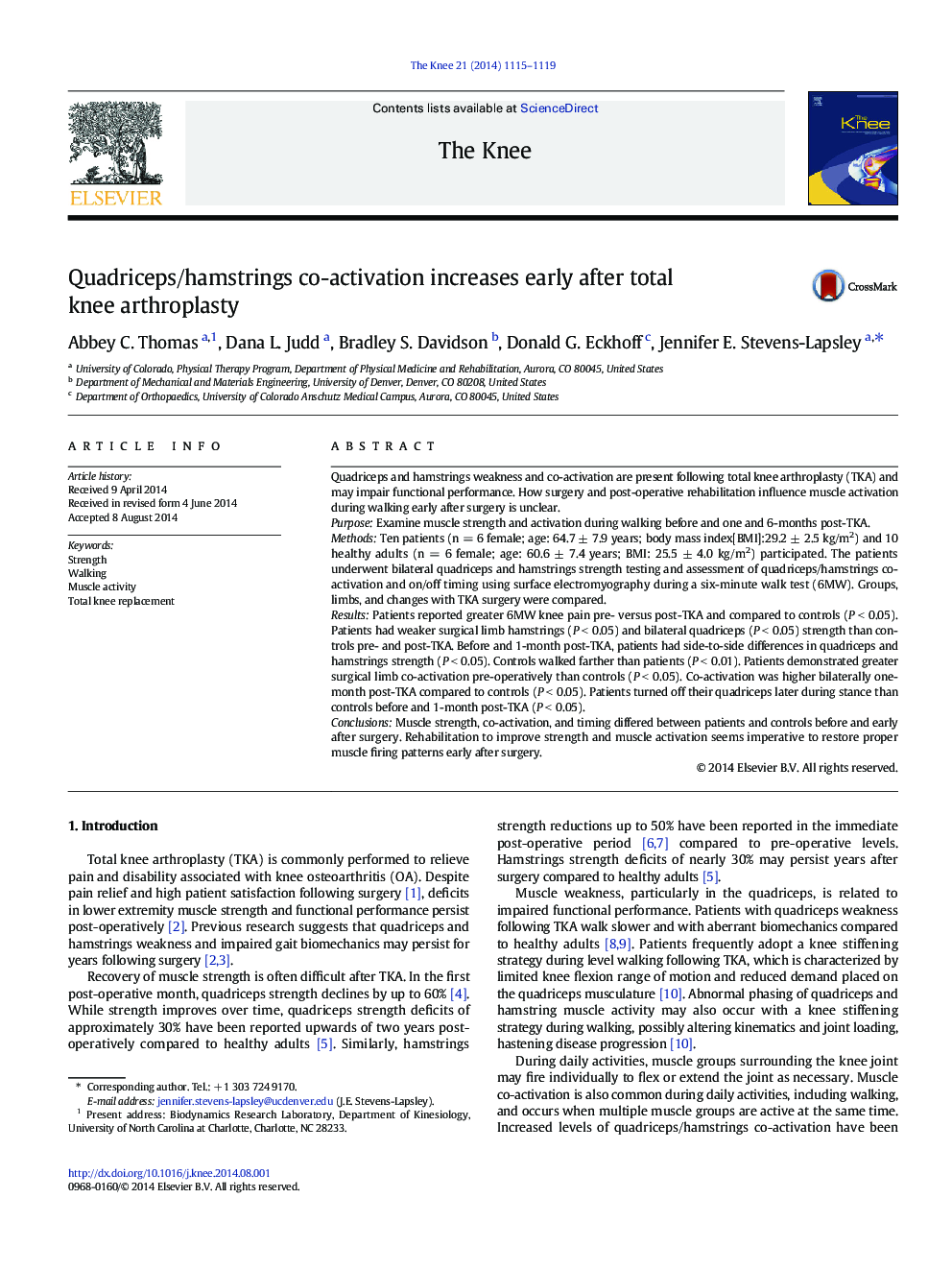| Article ID | Journal | Published Year | Pages | File Type |
|---|---|---|---|---|
| 6211337 | The Knee | 2014 | 5 Pages |
â¢Muscle co-activation is elevated bilaterally in patients one month after TKA.â¢Muscle co-activation is greater in patients than healthy adults.â¢Quadriceps activity is prolonged during stance before and early after TKA.â¢Rehabilitation should integrate strength and neuromuscular control retraining.
Quadriceps and hamstrings weakness and co-activation are present following total knee arthroplasty (TKA) and may impair functional performance. How surgery and post-operative rehabilitation influence muscle activation during walking early after surgery is unclear.PurposeExamine muscle strength and activation during walking before and one and 6-months post-TKA.MethodsTen patients (n = 6 female; age: 64.7 ± 7.9 years; body mass index[BMI]:29.2 ± 2.5 kg/m2) and 10 healthy adults (n = 6 female; age: 60.6 ± 7.4 years; BMI: 25.5 ± 4.0 kg/m2) participated. The patients underwent bilateral quadriceps and hamstrings strength testing and assessment of quadriceps/hamstrings co-activation and on/off timing using surface electromyography during a six-minute walk test (6MW). Groups, limbs, and changes with TKA surgery were compared.ResultsPatients reported greater 6MW knee pain pre- versus post-TKA and compared to controls (P < 0.05). Patients had weaker surgical limb hamstrings (P < 0.05) and bilateral quadriceps (P < 0.05) strength than controls pre- and post-TKA. Before and 1-month post-TKA, patients had side-to-side differences in quadriceps and hamstrings strength (P < 0.05). Controls walked farther than patients (P < 0.01). Patients demonstrated greater surgical limb co-activation pre-operatively than controls (P < 0.05). Co-activation was higher bilaterally one-month post-TKA compared to controls (P < 0.05). Patients turned off their quadriceps later during stance than controls before and 1-month post-TKA (P < 0.05).ConclusionsMuscle strength, co-activation, and timing differed between patients and controls before and early after surgery. Rehabilitation to improve strength and muscle activation seems imperative to restore proper muscle firing patterns early after surgery.
